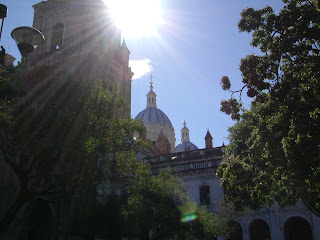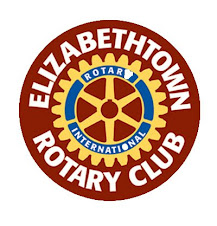
We'll wrap up this blog with the words of thanks sent by Ralph to the mission leaders....
David and Hector and Victor...
Thanks so much for all you and others did to make our Rotary trip to
Guayaquil a fantastic experience.
It was great for me for three reasons.
First, it was very meaningful because of the several thousand people
we served. We accomplished the primary purpose of our trip, to assist
so many Ecuadorians with vital medical help they otherwise would not
have received. I think we made a difference. The one thing missing
for me was being there when folks received their glasses. That would
have made it complete. I was humbled by the way so many don't have
what I take for granted, the ability to have excellent medical care.


Secondly, working with other Rotarians (and non Rotarians) from other
clubs in our area and especially from other countries. So many great
people with big hearts and gracious spirits. The Club Rotario
Guayaquil Sur was a fantastic host. They took care of us and hosted
us very well.

Finally, I was so excited to be in Ecuador again after having lived
in Quito for two years in the mid 60's. I saw new places and visited
Cuenca, the one major city I never before visited.

Having led several intergenerational church work camp/mission trips
to the Dominican Republic in recent years, I enjoyed being a
participant and others being in charge of the big and small details.
You managed so much behind the scenes stuff and needed to make
adjustments so many times and deal with things one couldn't
anticipate. I think we all handled surprises, vehicle breakdowns and
changes in a good spirit. Whatever happened was part of the experience.
Thanks again for your leadership!!
I'm ready for another Rotary mission.
Thanks so much for all you and others did to make our Rotary trip to
Guayaquil a fantastic experience.
It was great for me for three reasons.
First, it was very meaningful because of the several thousand people
we served. We accomplished the primary purpose of our trip, to assist
so many Ecuadorians with vital medical help they otherwise would not
have received. I think we made a difference. The one thing missing
for me was being there when folks received their glasses. That would
have made it complete. I was humbled by the way so many don't have
what I take for granted, the ability to have excellent medical care.


Secondly, working with other Rotarians (and non Rotarians) from other
clubs in our area and especially from other countries. So many great
people with big hearts and gracious spirits. The Club Rotario
Guayaquil Sur was a fantastic host. They took care of us and hosted
us very well.

Finally, I was so excited to be in Ecuador again after having lived
in Quito for two years in the mid 60's. I saw new places and visited
Cuenca, the one major city I never before visited.

Having led several intergenerational church work camp/mission trips
to the Dominican Republic in recent years, I enjoyed being a
participant and others being in charge of the big and small details.
You managed so much behind the scenes stuff and needed to make
adjustments so many times and deal with things one couldn't
anticipate. I think we all handled surprises, vehicle breakdowns and
changes in a good spirit. Whatever happened was part of the experience.
Thanks again for your leadership!!
I'm ready for another Rotary mission.

























